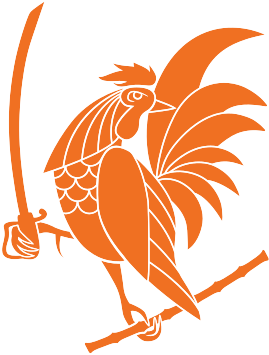It is said that Filipinos hid their martial arts of sword fighting in their cultural dances when the practice of swordsmanship, and the carrying of swords in public was banned by the Spanish conquistadors. The traditional dances allowed the Filipinos to continue practicing their deadly art by training with sticks to replace the swords. It was a great way to mask the art and the Spanish people thought it was just for entertainment since Zarzuela was performed every year. Zarzuela was (and still is) basically a religious opera performed in public during the holy week of Lent. Since Filipinos were Christianized, this was no threat to the ruling body at the time.
I should point out that I have never read or found (to this day of my research) of any Spanish document banning the practice of martial arts or the public carry of swords. Even though imposing such a ban would make sense, the Spaniards actually favored the divide-and-conquer tactic by using the opposing ethnic groups as their soldiers. I would think the Spaniards would enforce martial arts training more or enforce it by sharing their own style of fencing to their new “hired” soldiers. In this case, the sword and dagger techniques of arnis de mano can trace its influence.
Banning of sword -carry and martial practice makes more sense to me in the Luzon island of the Philippines. Especially in Manila, which was established as the capital by the Spaniards during the time of the conquistador Miguel Lopez de Legaspi around 1500’s. Many foreigners have tried to claim Manila, including the Chinese, British, and even the Dutch, but the Spaniards were able to reclaim it back before the Americans came. With all these wars going on plus the Tagalog and neighboring ethnic groups’ resistance against the Spaniards, I can see the need of the Filipinos to preserve their deadly art in a form of dance.
Is this battle dance a myth? I have studied and researched different Filipino martial arts systems and most of my teachers agreed that the historical transmission of sword fighting art was passed down through the knowledge of “dances”, but nobody can show me what such a dance looked like. Maybe all these modern masters had a secret meeting and agreed to fabricate such a myth to hype the art. Some have pointed out to me to look at Fandango sa Ilaw, Maglalatik, Singkil, and Tinikling dances. I have…in fact I have done these dances in school performances as a child. I still don’t see the martial aspects. Has it been just lost through time? Then I got lucky. Back in 2000 (13 years ago) I met and now study under Gat Puno Abon Baet. His family have been teaching and preserving the Moro-Moro battle dance for generations.
Let me say this…Moro-Moro is not a dance! By that I mean, Moro-Moro done outside of Zarzuela without the music, the stage, opera- recited poetry, and elaborate Roman costumes…it is essentially a kata or sets of fighting forms. In fact, It is a set of 30 attack-and-defend drills performed really fast as running attacks. It becomes dance-like when it is performed by a skilled player, because he or she can actually hide the movements by his “flow” of performance. Now add the stage, costumes, poetry, and music to the mix and you have a whole tradition that preserves: martial arts, culture, religion, and politics. 🙂
Click on the video to see some of my break downs of Moro-Moro “dance”.
